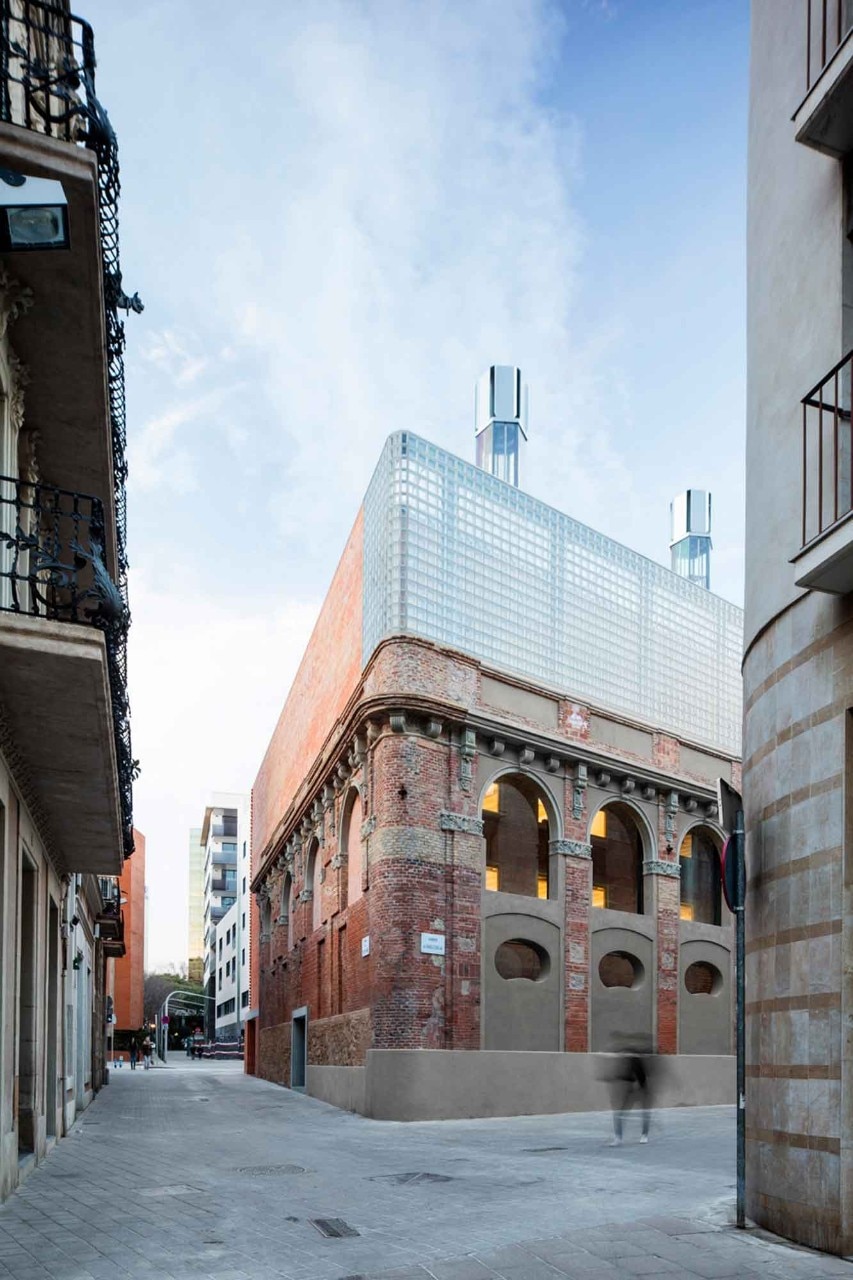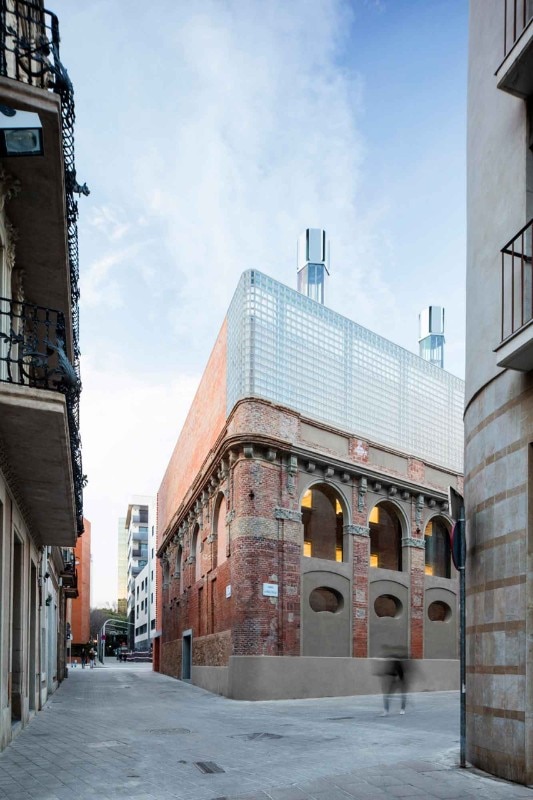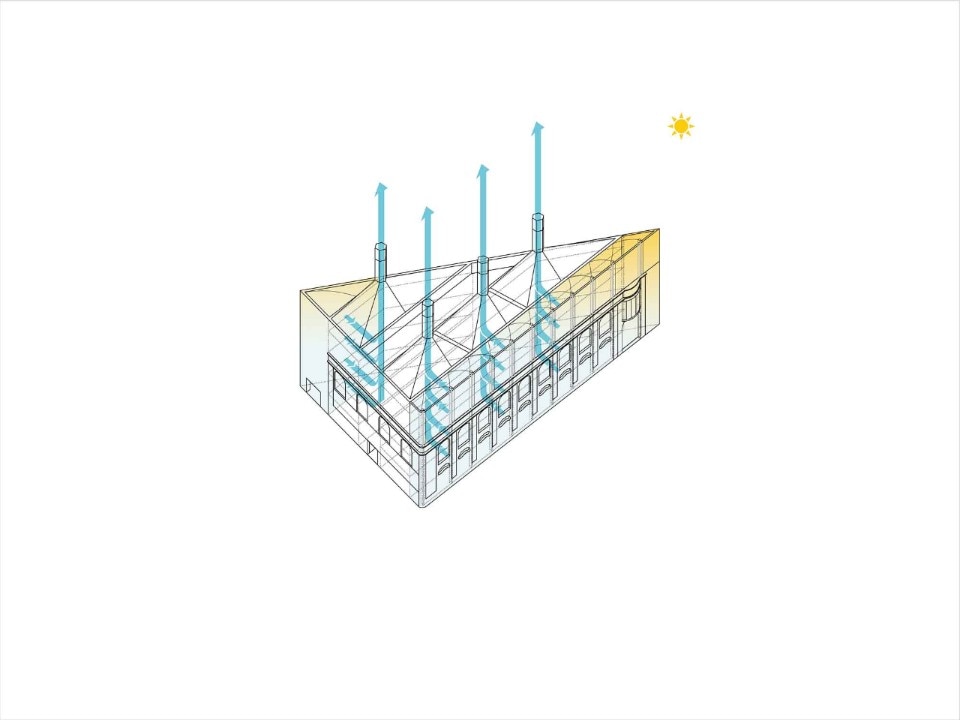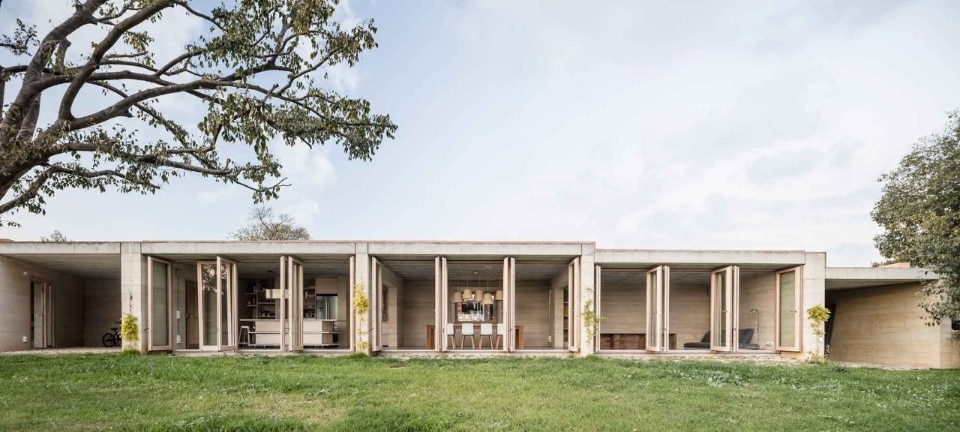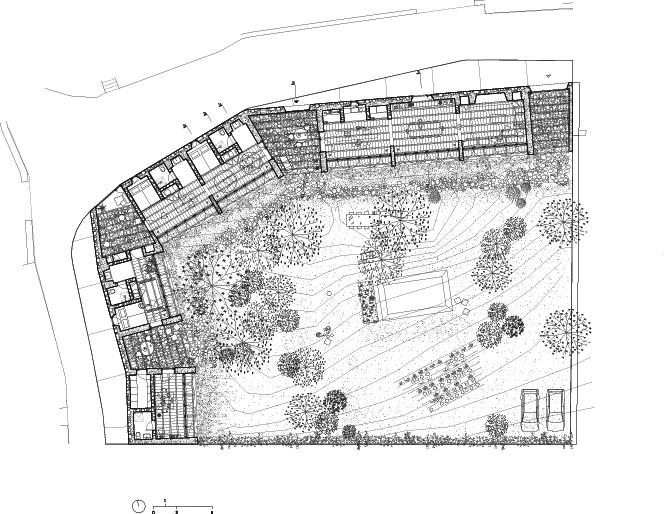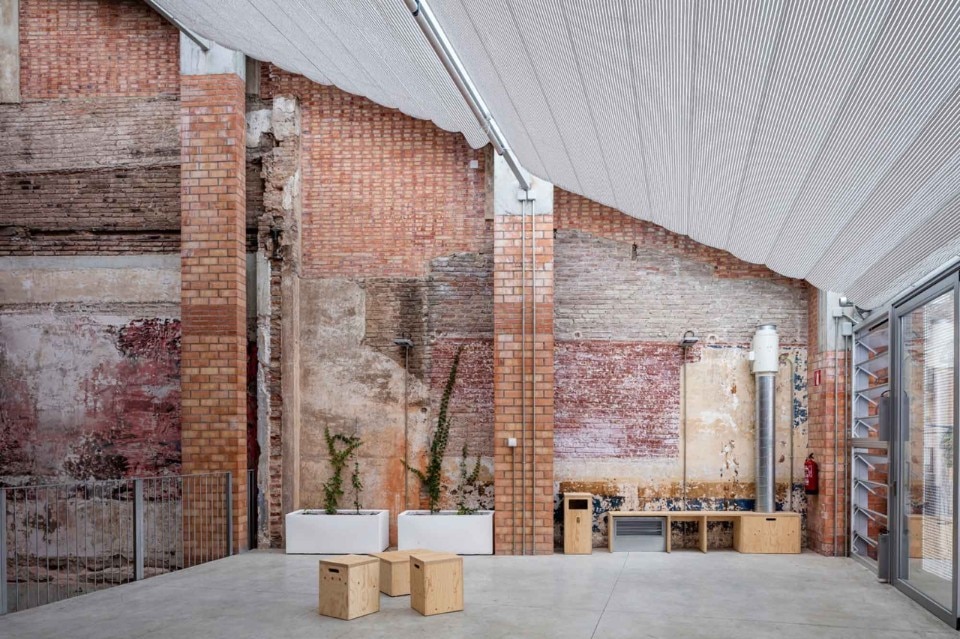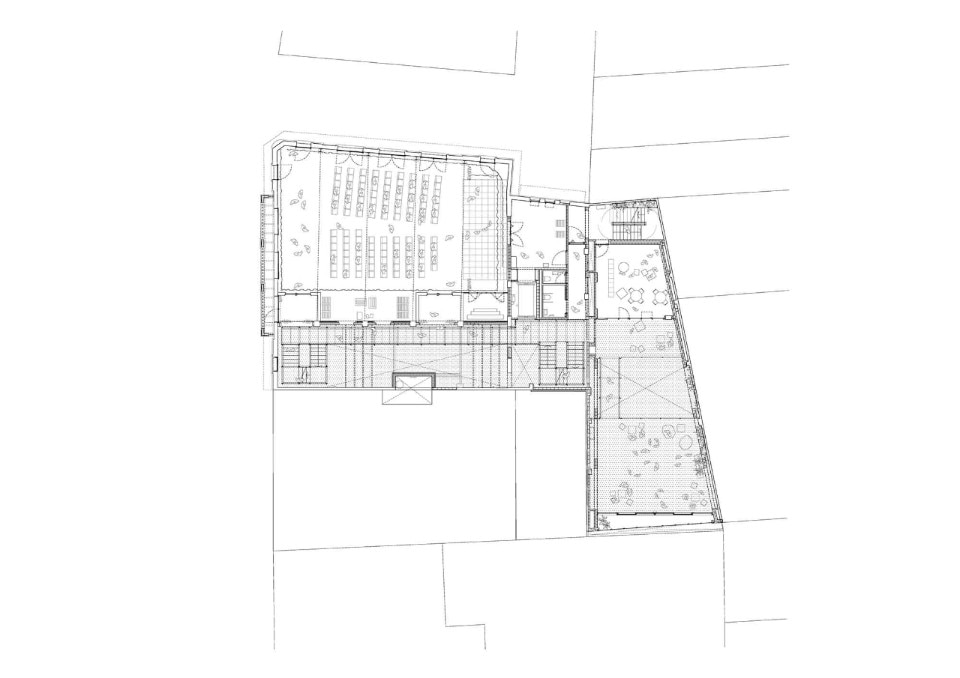The architects at the Harquitectes office are the kind that get their hands dirty on the construction site. Industrious and pragmatic, they see the building phase as a fundamental moment in the creative process. David Lorente Ibáñez (Granollers, 1972), Josep Ricart Ulldemolins (Cerdanyola del Vallès, 1973), Xavier Ros Majó (Sabadell, 1972) and Roger Tudó Galí (Terrassa, 1973) met as students at the Vallès School of Architecture (ETSAV) in Sant Cugat del Vallès, half an hour by car inland from Barcelona, the city where they established themselves in 2000.
From the simplest single-family dwellings to large public buildings, projects by Harquitectes all maintain the same formal and methodological principles with attention for sustainability of the most diverse types, but without wanting to flaunt the use of technology in spectacular ways. Plain shapes, a fixation with modularity, the reinterpretation of traditional techniques, the use of modest materials left unplastered, exposed structural elements, and obsessive detailing – all distinguish the Catalan group’s approach to architecture. We can define their buildings as austere, honest, and devoid of what is unessential. To quote the philosopher Ivan Illich, “For Aristotle or Thomas Aquinas, austerity marked the foundation of friendship, a virtue that does not exclude all enjoyments, but only those that are distracting from or destructive of personal relatedness.”
At Harquitectes, every decision has a technical motivation. Climate control, ventilation, resource management, and the life cycle of materials are the first factors that determine the form of the project. This approach is clear in one of the office’s latest projects, the civic centre Cristalleries Planell, a former glass factory in the Sants neighbourhood of Barcelona, 2017. Here we find skilful exchange between traditional techniques and the office’s practical, contemporary visual language. The layering of old and new facades generates buffer spaces between the street and the interiors. Solar chimneys on the roof constitute not only a technical device, but a new icon symbolising the building’s contemporary transformation. Austerity at Harquitectes means doing more with less while mastering the instruments that give architecture conviviality.


